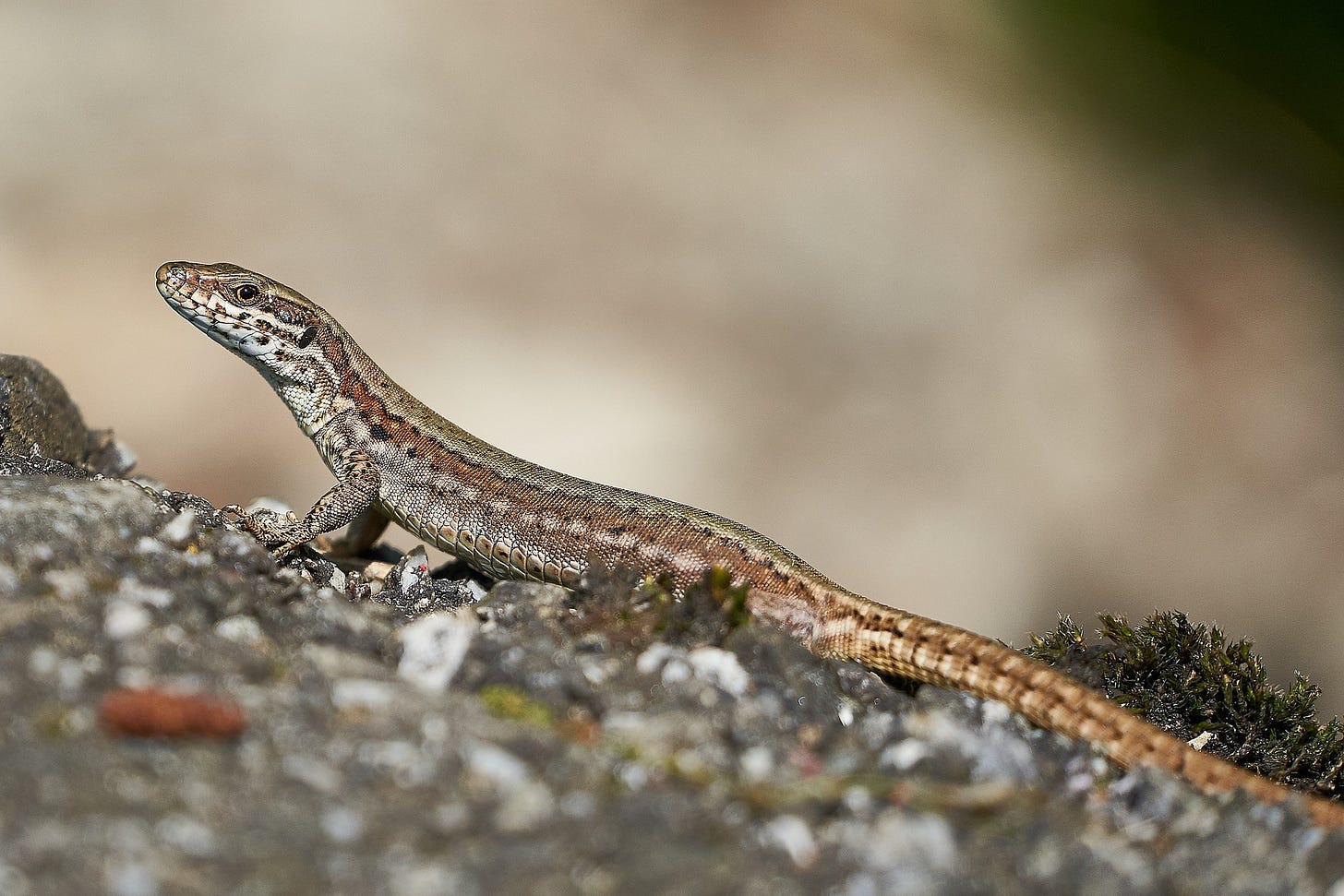The September sun still warms the stone walls of our home, and with it, innumerable wall lizards (Podarcis muralis). We’ve got babies no longer than a matchstick, big ones, old ones, and lizards missing the ends of their tails1. Their scales are patterned in speckles. They move with a kind of certainty I envy, sure like the seasons, nimble and scanning.
A scattering of them skitter the facade, scaling high toward the roof, peeking into open windows. Others, low across the ground, dart from the house to the woodpile drying for winter. They know where they’re going, while I rarely do. They’re everywhere, and I don’t mind.
This morning, I was on the phone in the kitchen, eyeing a mob of crows hounding a red kite above tall pines from the window. Out of the corner of my eye, something slithered past, and for a split second, I thought snake! We have vipers in the area, and anything that moves like that makes me jump, but it was only a beautiful green lizard (Lacerta viridis), slipping under the stove. Its small head peered out, watching me as I watched the sky.
Lizards make good company in a place that can feel lonely sometimes. They’re part of our everyday cadence, though I wish they’d stay outside!
We made the mistake of leaving an empty terracotta planter upright beside the rock wall in the garden. It became a graveyard. Lizards wandered in, curious or looking for warmth, and couldn’t climb back out. The deep remorse as I emptied carcasses from the pot reminded me that even small errors can have consequences, and even the smallest creatures have their seasons. It doesn’t take much to tip the balance. I ran to the forest out back, seeking solace from the trees and a soft autumn breeze.
Soon, the rest of the lizards will slip away on their own terms to hibernate through the frost, and we’ll have to spend the long winter without them. So it goes, I guess.
Goodnight, sweet reptiles. See you on the other side.
Lex
A bit about common lizards, generally speaking
The presence of lizards around homes in the countryside is a good sign.
They primarily feed on worms, ants, spiders, beetles, and flies, and contribute to a balanced ecosystem. Their appetite also helps lower the risk of illnesses like Lyme disease.
It’s no surprise lizards occasionally slip into houses. Warmth, humidity, and a supply of insects make stone walls, woodpiles, and even kitchens attractive refuges for lizards. They aren’t territorial or aggressive. They’re just looking for shelter and a well-stocked pantry.
In winter, lizards can no longer warm themselves enough to stay active. They enter hibernation instead, retreating into cracks in walls or under tree stumps until the warmth returns.
The common wall lizard, the species most often seen here, usually lives between four and six years, sometimes reaching 10.
Many lizards can self-amputate or “drop” their tails, also known as tail autotomy. This is a natural self-defense mechanism that occurs when the lizard senses a threat or is grabbed by a predator.




I now like lizards - thanks for the tuition!
Thank you for reading and enjoying what I write. And sharing the beauty of everyday ❤️